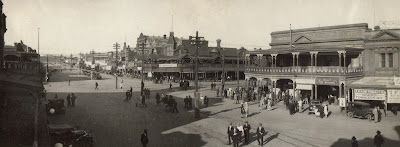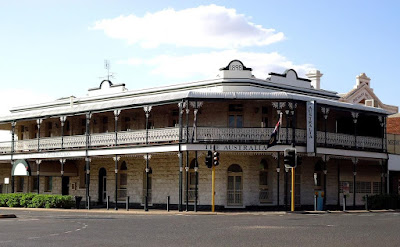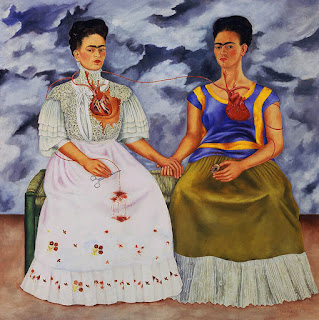Dot and the Kangaroo,
1977, yoramgrossfilms
The Camel Boy
1984, IMDb
Yoram’s first love was music, studying at Krakow Uni post-war. He then studied film under Jerzy Toeplitz at the Polish Film Institute. In 1950 he moved to Israel, working as a newsreel and documentary cameraman, and later as an independent film producer and director. His first full-length feature, Joseph the Dreamer 1961, being successful at a number of international film festivals. His comedy One Pound Only 1964 set the box office record of the year.
Thanks to newscom.au, we know that in 1968 Yoram, Sandra and the children migrated to Sydney. They established Yoram Gross Film Studios which became into a respected producer of animation for cinema and television. Then he produced film clips for my best weekly tv music show, Bandstand. At Sydney Film Festival in 1970 he won an award for The Politicians in the Best Australian-Made Film category. Realising that there were no Australian films for children, he decided to fill that gap.
In 1977, Gross made his first animated feature. Dot and the Kangaroo used an aerial image technique of drawings over live action backgrounds, filmed in NSW’s Blue Mountains. Although the film was much like other animated children's musicals starring animals, the film was essentially Australian in its use of symbols and accents eg it referenced Indigenous Australian culture in scenes displaying animation of cave paintings and aboriginal dancing.
Blinky Bill
1992, yoramgrossfilms
Gross acknowledged his animation style was old fashioned and had been superseded by computer-generated imagery. But the Australian Centre for the Moving Image said Gross’ animations were distinctive and offered a freshness and simplicity that could be lost in the more complex visual world of computer-generated imagery. And I say his animal characters are more lovable.
In The Camel Boy (1984), young Ali and his camel-driver grandfather Moussa were part of an expedition through the Australian Outback. Australia has had camels since the mid-C19th but now they were faced with prejudice. Luckily Moussa's knowledge and the hardiness of his camels in the horrible desert conditions quickly proved vital to both the success of the expedition and the survival of its members.
Dot helped her native animal friends in Dot and the Koala (1984) when Bruce the koala told her of plans to build a massive dam that would destroy their environment. But the local farm animals believed that the creation of the dam would catapult their small country town into the C21st. With both sides fighting for what they believed was right, Dot's plans to wipe out the dam were jeopardised by the mayor Percy, a pig and local detectives Sherlock Bones the rat, and his mate Watson the cat.
In 1992 Gross' Blinky Bill film which quickly became a global success, and was soon awarded the prestigious Order of Australia for his contribution to the nation’s film industry. [Local woodlanders were carrying on with their life as normal.. when two men cleared the entire forest with their tractor. The animals evacuated as the trees fell down and homelessness continued. Blinky rescued the young female koala Nutsy from the fallen trees. They both run into Mr. Wombat who explained to him about his life].
Through their Yoram Gross Film Studios in Sydney, Gross had made 16 animated features and 12 TV series, bringing to life characters such as Dot and the Kangaroo and the lovable Koala, Blinky Bill. Alas for me, my sons thanked me for taking them to the cinema for years, then said they'd be going by themselves from 1992!!
In The Camel Boy (1984), young Ali and his camel-driver grandfather Moussa were part of an expedition through the Australian Outback. Australia has had camels since the mid-C19th but now they were faced with prejudice. Luckily Moussa's knowledge and the hardiness of his camels in the horrible desert conditions quickly proved vital to both the success of the expedition and the survival of its members.
Dot helped her native animal friends in Dot and the Koala (1984) when Bruce the koala told her of plans to build a massive dam that would destroy their environment. But the local farm animals believed that the creation of the dam would catapult their small country town into the C21st. With both sides fighting for what they believed was right, Dot's plans to wipe out the dam were jeopardised by the mayor Percy, a pig and local detectives Sherlock Bones the rat, and his mate Watson the cat.
In 1992 Gross' Blinky Bill film which quickly became a global success, and was soon awarded the prestigious Order of Australia for his contribution to the nation’s film industry. [Local woodlanders were carrying on with their life as normal.. when two men cleared the entire forest with their tractor. The animals evacuated as the trees fell down and homelessness continued. Blinky rescued the young female koala Nutsy from the fallen trees. They both run into Mr. Wombat who explained to him about his life].
Through their Yoram Gross Film Studios in Sydney, Gross had made 16 animated features and 12 TV series, bringing to life characters such as Dot and the Kangaroo and the lovable Koala, Blinky Bill. Alas for me, my sons thanked me for taking them to the cinema for years, then said they'd be going by themselves from 1992!!
Only in 1992 did Yoram Gross Film Studios start making animated TV series and in 1996 he sold a 50% stake in the company, with a view to expansion, to Australian exhibition and distribution company Village Roadshow Ltd. As his TV series and feature films sold internationally, German company EM.TV acquired the Village Roadshow stake in 1999, buying out the founders in 2006 and renaming the company as Flying Bark Productions. Flying Bark continues to make films and TV series based on Gross creations.
Australia's leading animation producer and director died in Sydney in 2015, aged 88. He was survived by his wife, 2 children and 5 grandchildren, a rare outcome for a Holocaust survivor. His legacy will live on with the Sydney Film Festival’s annual award for the Best Animated Feature, named for Yoram Gross.




















